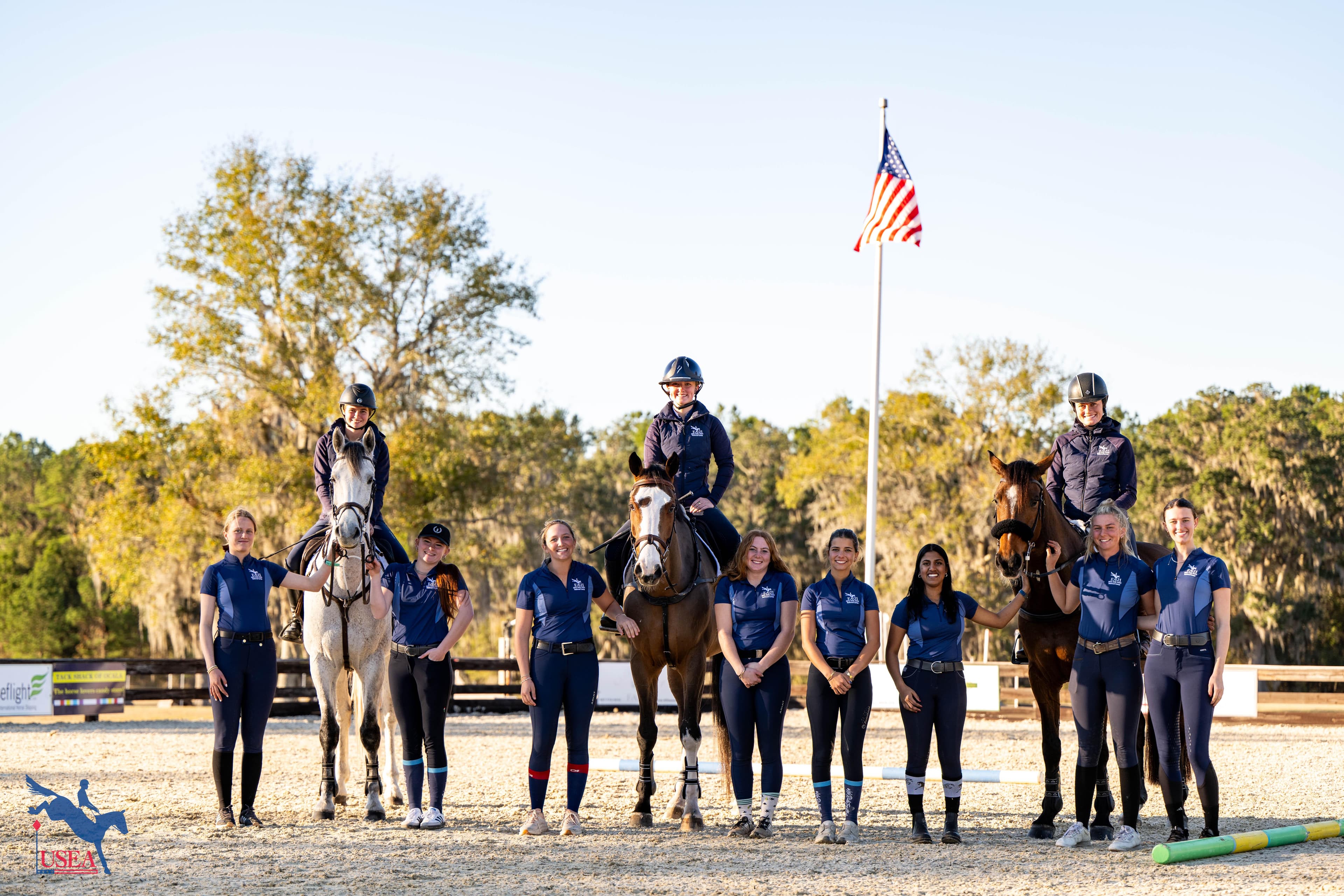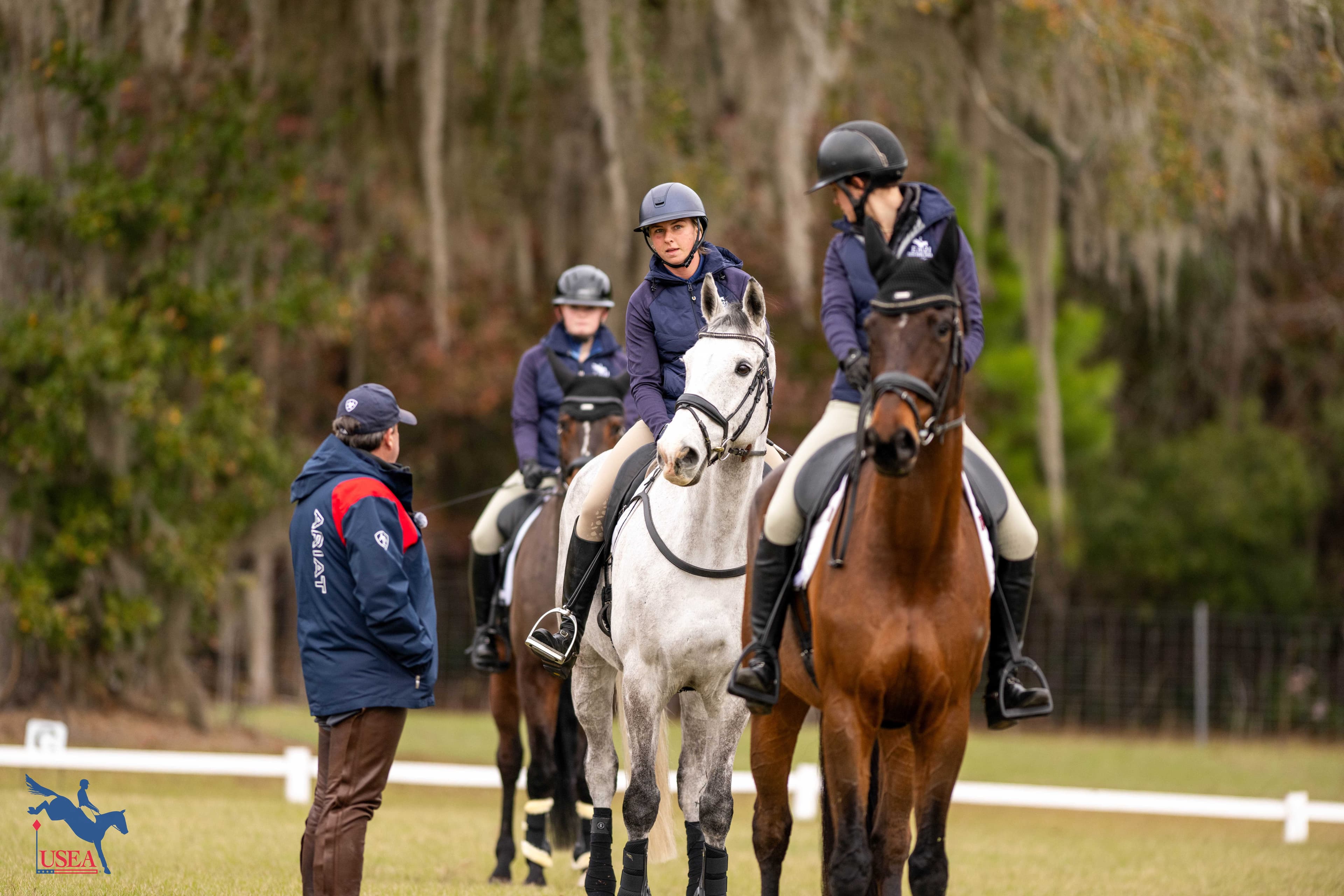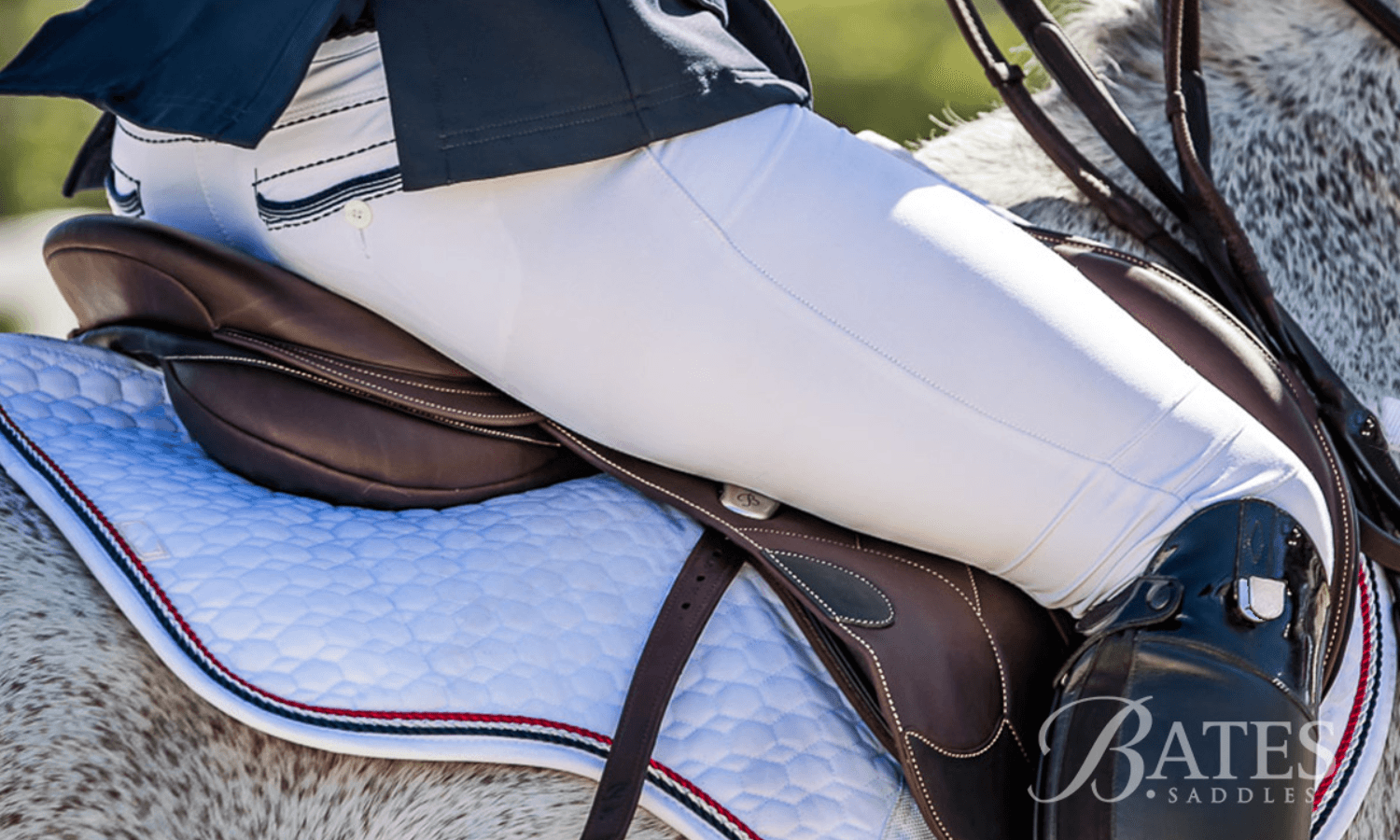Rule Refresher: 2021 FEI Rule Changes
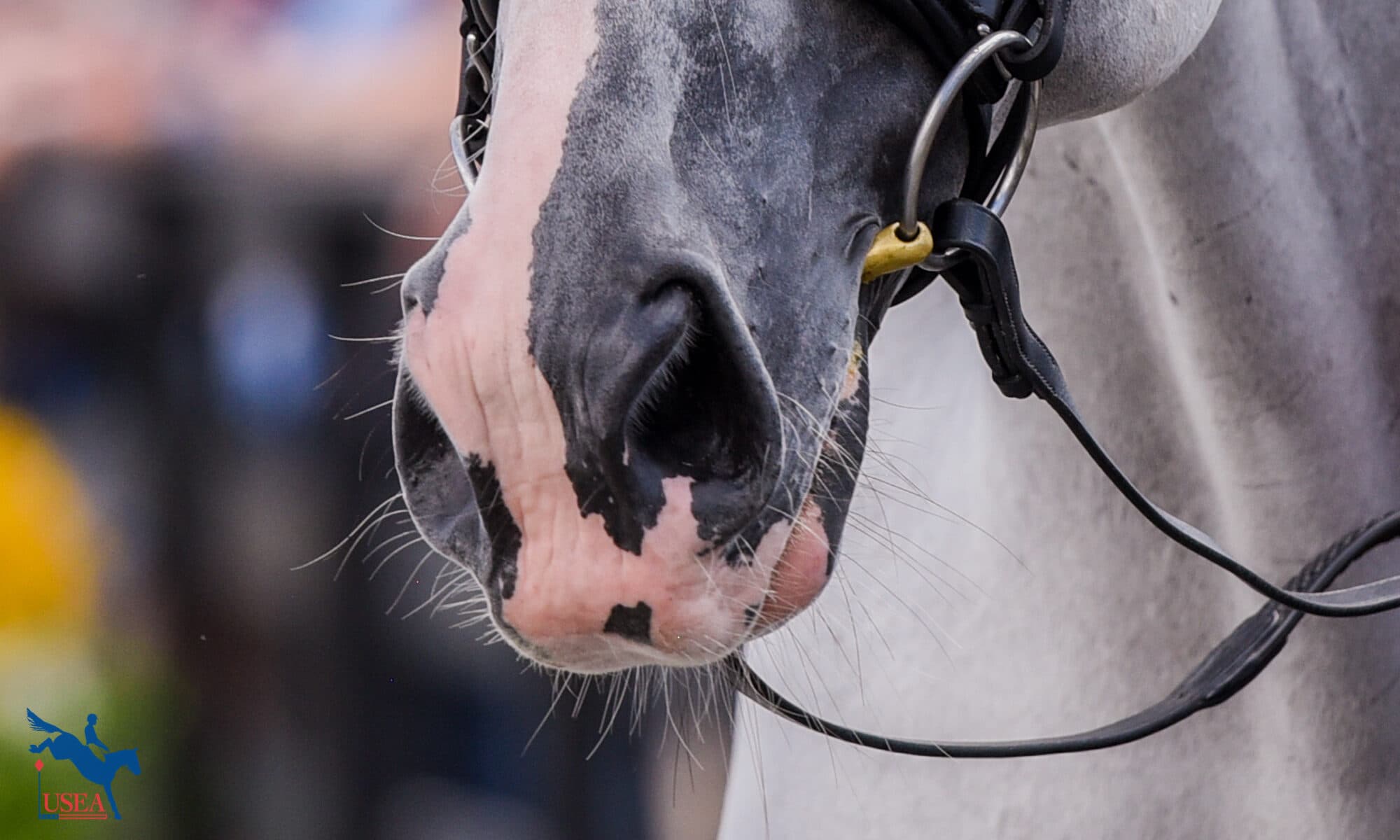
There are currently 34 FEI events on the U.S. Eventing calendar for 2021 with the first taking place in mid-March. While all national events in the U.S. follow the USEF Rules For Eventing, international events follow the FEI Rulebook.
The FEI General Assembly met in early December and unanimously approved all proposals for 2020 modifications to the eventing rules. In addition, there were a few important modifications to the general regulations and veterinary regulations.
Article 140 - Protection of Athletes and Participating Support Personnel
Properly fastened helmets are now required at all times while mounted on the show grounds (including the dressage phase). Failure to wear protective headgear shall result in a yellow warning card being issued to the athlete.
The full rule reads:
“While riding anywhere on the show grounds, and for Driving Athletes and Grooms in the Marathon phase, the use of a properly fastened Protective Headgear is mandatory. The applicable Sports Rules may provide for an exception to this rule by permitting Athletes to remove their Protective Headgear while accepting prizes, during the playing of the National Anthem and any other ceremonial protocol. Failure to wear such Protective Headgear where and when required shall result in a Yellow Warning Card, being issued to the Athlete or Participating Support Personnel (as applicable) unless exceptional circumstances apply. The use of cameras on Athletes or Participating Support Personnel (as applicable) or equipment (such as on Protective Headgear, head covering or carriage) shall not be permitted, unless otherwise specifically agreed by the FEI. An Athlete’s decision to wear a camera while competing shall always be voluntary and at their own risk.”
Article 1004 – Prohibited Methods
Starting July 1, 2021, it will be forbidden to clip or shave or any other way remove a horse’s sensory hairs. Areas of hair that must be clipped to allow for veterinary treatment are exempt from the rule. The FEI has defined sensory hairs as “hard hairs located on the horse’s muzzle and around its eyes, also known as ‘whiskers’ that are used for sensation.”
The full rule reads:
1. Horses are not permitted to compete in FEI Events:
“If the horse’s sensory hairs have been clipped and/or shaven or in any other way removed unless individual sensory hairs have been removed by a veterinarian to prevent pain or discomfort for the Horse. Areas of hair that must be clipped, shaven or removed to allow veterinary treatment are exempt from this rule. As of 1 July 2021, Sanction 39 in Annex VI will be applicable.”
Article 1063 – Prohibited Treatments
An additional prohibited treatment has been added which says: “Recent blistering and/or firing resulting in evidence of inflammation or hypersensitivity is prohibited.”
Rule changes of note for the FEI Eventing Rules for 2021 include the following, but it is recommended that all FEI riders read the rulebook in its entirety.
More flexibility with the distribution of prize money. 505.3.1 Distribution now reads:
“The total amount of prize-money published for each Competition in the schedule must be distributed as per the breakdown shown for each Competition in the schedule. Organising Committees must state the details of the distribution of prizemoney in the Event schedule. Organising Committees may include two prizemoney distribution options in the schedule to enable the amount and number of prizes to be adjusted to the definite number of starters.”
Additions to the language for the course designers:
515.4 Course Designer
“All Course Designers designing a 4 or 5 star course for the first time must be mentored and shadowed by an experienced Course Designer at the same level”
515.4.1 Cross Country
“The Course Designer role during the Cross country test is to work with the Technical Delegate and Ground Jury to deal with judging queries, sanctions (dangerous riding, abuse of horse, incorrect behaviour, welfare of the horse), reviewing of course/fences during XC in case of repetitive falls or weather situations. The Course Designers are responsible to ensure that all frangible technology are fitted in accordance to the rules & up todate guidelines.”
Increases to the MERs for some C,D, and uncategorized athletes. These additional qualification requirements will begin on July 1, 2021.
- CCI4*-S: Uncategorized or D or C athletes are now required to have MERs at 3 CCI3*-S
- CCI3*-L: Uncategorized athletes are now required to have MERs at 2 CCI3*-S and (1 CCI2*-L or 1 CCI3*-S).
- CCI4*-L: Uncategorized or D or C athletes are now required to have MERs at 2 CCI3*-L and 1 CCI4*-S
- CCI5*-L: Uncategorized or D or C athletes are now required to have MERs at 2 CCI4*-L and 3 CCI4*-S
The language was updated about leaving a venue after a fall without being examined.
523.3 Examination After a Fall
“Any Athlete who leaves the venue after a fall without submitting to the examination required under this Article will automatically be issued an Eventing Recorded Warning for incorrect behaviour, which will be delivered to his or her National Federation.”
For dangerous riding penalties it was clarified that a rider can be given either 25 penalties or elimination (not both).
525.2 Warnings and Penalties
All cases of Dangerous Riding will incur an Eventing Recorded Warning. In addition, depending on the circumstances of the case, either of the following measures may be imposed:
a) 25 penalties
b) Elimination
An additional definition was added to the horse abuse section 526 which says “serious case of dangerous riding.”
The 538 dress section was updated to reflect the new required helmet rule in addition language was added that says: “a tail coat or jacket approved by the Athlete’s NF (contrast colouring and pipping is allowed)”
In addition, the level specifications for dress of CCI1*, CCI2*-L, and CCI3*-L was removed and is now just called “lower level events”
Under the saddlery section 539.1 Training and Exercise it was added that the following is now permitted: “Leather, sheepskin or similar material may be used on each cheek piece of the bridle providing the material does not exceed three centimeters in diameter measured from the Horse’s cheek.”
Specifications for bit material were also added to 539.2 Dressage Test. The sentence now reads: “A snaffle bridle of which the bit is made of metal, flexible rubber or synthetic, or plastic or leather material is also permitted as authorised in Annex A.”
And the bridle material sentence now reads: “The bridle must be made entirely of leather or leather-like material, except for a small disc of sheepskin soft padding, which may be used under the intersection of the two leather straps of a crossed noseband, on the poll or underneath the noseband.”
It dressage is now forbidden to use “Bits where the mouthpieces rings restrict the reins to move freely are not permitted as well as bits that can slide vertically creating a gag effect.”
The use of sheepskin for the cross-country and show jumping tests were rewritten in 539.3 to say: “For Cross Country, any addition to the cheekpiece is forbidden (sheepskin or additional material). For Jumping only, leather, sheepskin or similar material may be used on each cheek piece of the bridle providing the material does not exceed three centimeters in diameter measured from the Horse’s cheek.”
It is also now compulsory to have a throat lash on cross-country to keep the bridle in place.
A change was made to the levels required to have frangible fences and the language in 547.2.4 Frangible/Deformable Obstacles now states: “all levels, all open oxers, open corners, verticals or near verticals with open rails, top rail on triple bars and gates where the rail dimensions and weight fit the acceptable parameters of an FEI approved frangible device, must be fitted with frangible devices.”
It is now a rule that every cross-country course must have at least one obstacle related to water and 547.2.5 was rewritten to say that.
An additional rule was added to the cross-country obstacle section that reads:
547.2.7 Ground lines
“Ground lines must be used on fences at all levels.
Note: Please refer to the Cross Country guide for Officials for further information about the use of Ground lines”
A clarification sentence was added to 547.5.2 Obstacles with Alternatives that says: “An alternative obstacle must be sited in such a way that the horse/ athlete must make a new attempt/approach after a refusal or run-out.”
Two additions were made to 1.3 Permitted Snaffles for dressage (underlined below).
“b) May be double-jointed with rounded or rotating mouthpiece allowing for better fit and comfort. The edges must be rounded and the length of the centre link must be 4.5cm long as a maximum.
c) May have a slightly curved port, allowing more room for the tongue. The maximum height is 30mm from the lower part of the side of the tongue to the highest point of the deviation. The widest part of the deviation must be where the mouthpiece contacts the tongue and must have a minimum width of 30mm. The mouthpiece of a jointed or unjointed snaffle may be shaped in a curve within the dimensions specified above.”
In addition, two sentences were added to 1.4 Illegal Bits for dressage
“d) Bits that can slide vertically creating a gag effect
e) Mouthpiece wings that restrict the reins to move freely.”
In the bit diagram, a french link was added and a specific kind of hanging cheek was removed.
In Annex A the Permitted Nosebands section was changed to be called “Permitted Bridles for the Dressage Test.” And the following sentence was added: “The images below are examples only, and similar bridles which produce the same effect on the horse are also allowed if they adhere to the art.539.”
The dressage tests for the CCI2*-A, CCI2*-B, and CCI3*-B have been modified for 2021 and a CCI* test will also be published in January.
The cross-country maximum dimensions for the World Championships and Olympics have been added to Annex B. The chart is as follows:
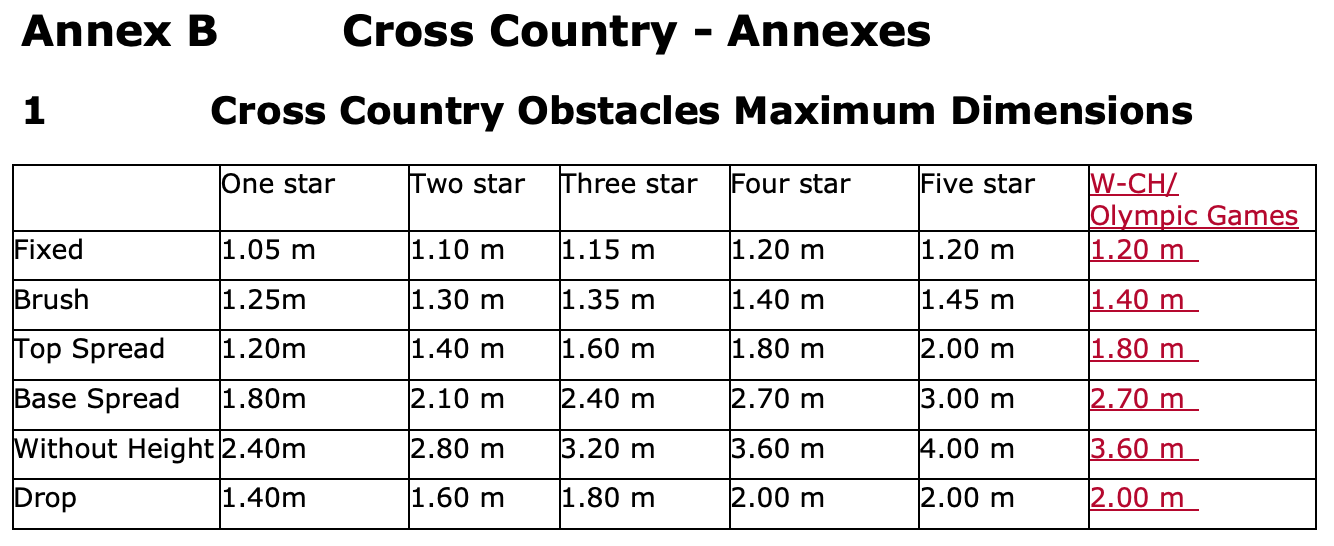
Annex D Medical Services has been rewritten and can be viewed starting on page 87 here.
Want to catch up on past rule refreshers? Click here.

